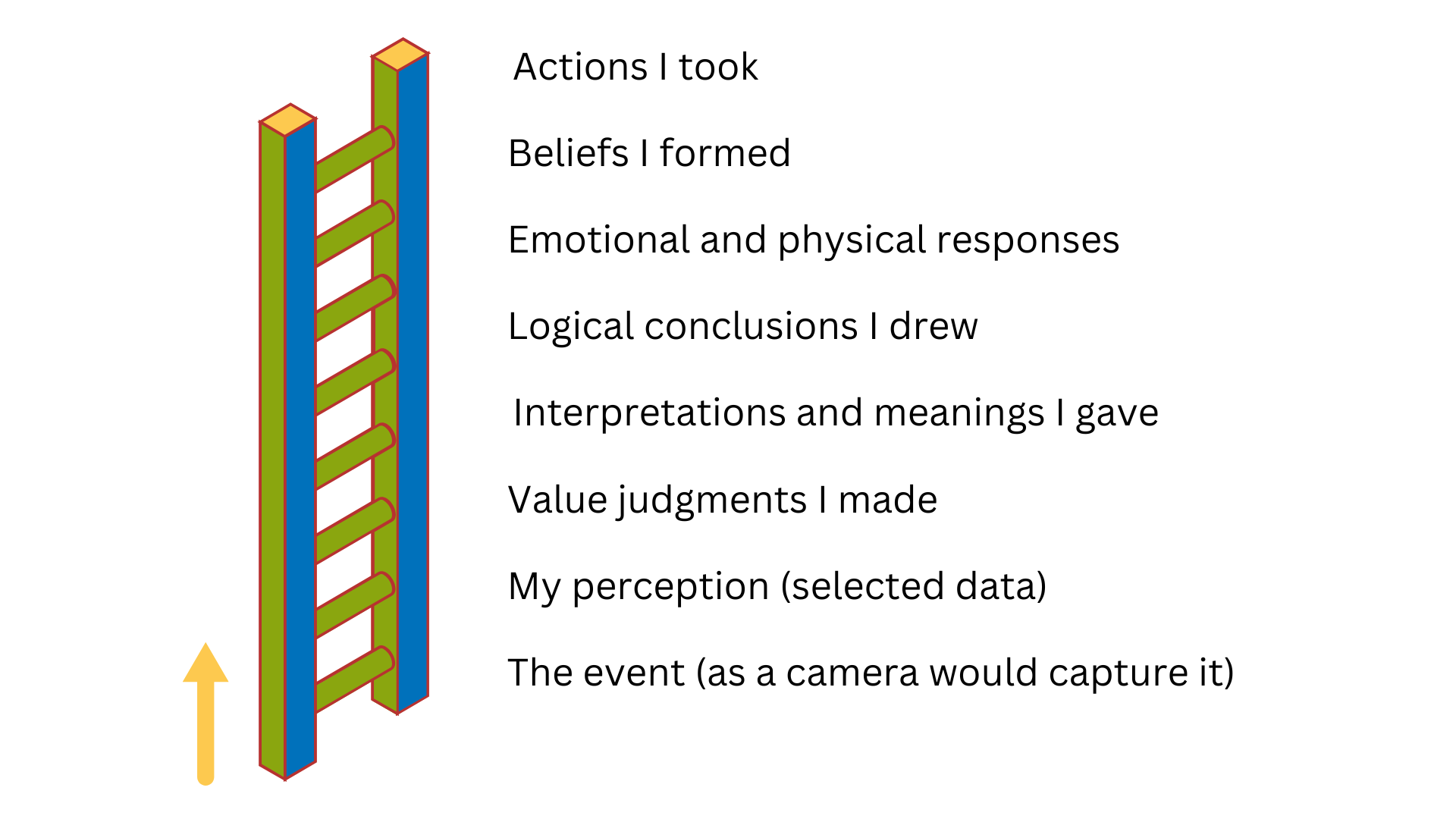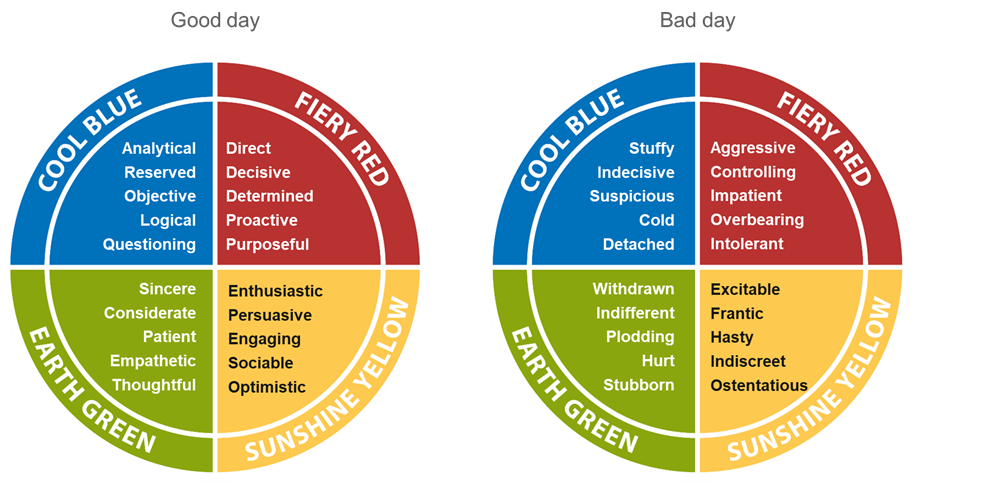It’s an awkward moment when a new colleague gets your back up.
You might perceive them as too direct, overly critical, or overbearing. Or perhaps they’re the ‘type’ who doesn’t seem to listen, never really engaging with other viewpoints or suggestions in favour of their own narrative.
You wanted to work well with them – after all, every new connection is an opportunity to learn from someone else’s perspectives and experience - but in your eyes, they’ve made it difficult. You keep an open mind and change tack slightly in your next few exchanges, but their behaviour and communication style are still blocking any decent collaboration.
You feel stuck. Why can’t they adapt their behaviour to be more ‘acceptable’? Why aren’t they reading the room?
For a while you give them the benefit of the doubt. They could just be having bad days. But the next few exchanges seem to prove your suspicion – they’re just not your kind of person and you worry it will be a problem in your working life together and for the team. It starts to affect your enthusiasm for your job and your identity as a positive, can-do colleague.
So, is it them, or is it you? Can you accept your differences, or do some people just never gel?
Reality check: It's not personal
There’s always another way of viewing it. You don’t know yet what the reasons are for how they behave and come across. There’s room for you to create a different dynamic here. Sure, your colleague might appear to lack empathy in and have low self-awareness, but if you can work out what motivates them, what their goals are and what triggers certain behaviours, you’re on the right road.
It’s also important not to take your colleague’s ‘off’ behaviour too personally. When someone offends us often and doesn’t flex to suit what’s clearly our preferred working style, we tend to think they have a problem with us. Within no time, we’ve made a host of assumptions for which we have little proof.
It’s true that some people seem so different to us in their approach, outlook or style that it’s hard to imagine them ever being enjoyable colleagues. Their background and experiences feel alien to ours. But even if that’s the case, we can improve the way we communicate in our everyday working lives.
Looking through a different lens
Let’s consider these typical workplace scenarios and your likely reaction to them.
- An ‘over-enthusiastic’ colleague gets excited about and commits to too many strands of activity within a project that has a strict deadline and parameters. They get irritated if you try to rein them in (because you think their goals are unrealistic and likely to dilute the core project objective). They don’t appreciate you ‘curbing their creativity’ and imply that you’re a pessimist.
You assume they can’t deliver and will distract others with their lack of focus and order. - A ’overthinking’ colleague keeps finding fault with your suggestions and even criticises your contributions publicly in meetings. They often call out ‘inaccuracies’, don’t let anything go, appear judgmental, and frustrate you by slowing down the process. They seem unable to respect the overall business goal or bigger picture. Surely no-one needs that much detail?
You assume they’re insular, pedestrian, dull and in danger of slowing the team down. - An ’indecisive’ colleague regularly slows down major decisions. You see them as obstructive, stubborn and lacking awareness of what it takes to keep business moving. They refuse to sign off important decisions until everyone’s been consulted. They imply that you’re insensitive to others’ needs.
You assume they’re over-sensitive and incapable of prioritising what the business needs. - A ‘dismissive’ colleague repeatedly fails to respond fully to your emails, even when you request specific answers in order to progress a project. They ping back one-liners that sound flippant and they seem annoyed by your level of questioning. You’re always chasing them for the missing parts, the threads of your conversations get messy and important info gets lost. You realise they don’t share your need for detail, but you can’t progress without more considered responses.
You assume they’re flaky, impatient, unconscientious and could land the team in trouble.
What can be done?
The ideal solution in each scenario is for you both to dial up your empathy. Get to know why you each have a preferred way of working and a default communication style and increase your tolerance for each other as a result.
But not everyone plays ball.
Even though you’re open to adapting your style, they appear to be less self-aware. They’re not flexing, nor do they understand why they should. To date your team hasn’t engaged in any structured team building process or programme, designed to unlock differences and unblock sticking points.
But you can still make a difference
Even if they remain unaware of their impact, you can help by understanding your reactions more closely. If you don’t, and you resort to simply labelling your colleagues negatively, you risk making wrong assumptions and that might result in poor judgments due to frustration, impatience or defensiveness. If you allow yourself to be constantly offended by their actions, you may find it hard to move past the current dynamic.
Challenge your reactions
Assumption is a key word in workplace dilemmas like this. Misplaced assumptions are at the root of many challenging relationships. Let’s take a look at the Ladder of Perception.
Based on Jungian psychology, it’s a tool we use at Insights to observe more closely how we experience people and events.
It shows us that our brains typically attach at least five entirely subjective layers to what we observe, influencing our reactions before we’ve realised we’ve attached any bias.
After all, perception is not reality!
Perceptions aren’t always accurate, especially in emotionally charged environments. We often distort and generalise information and facts, leading us to have perceptions of people or situations which just aren’t true.
The scenarios described above are typical at work, but it doesn’t mean your colleague has something against you. It’s simply their preferred working style, and because it doesn’t suit your style, you’ve drawn a set of negative conclusions.
If we understand more about how our perceptions are formed, we can disrupt them and reframe how we see a person or a situation. We can stop making assumptions we didn’t even know we were making based on our largely unconscious thought patterns.

The metaphorical ladder* reminds us that we base our assumptions mostly on previous experience. We don’t know the motivations of the person behind the event we’ve reacted (negatively) to. We perceive patterns and draw conclusions and act on them without having the facts.
By exploring each rung of the ladder, we can choose to challenge our reactions and consequent actions before we reach the top of it. That way, we reduce the likelihood of forming such rigid beliefs about others.
Going one step further and applying the four Insights colour energies to this, we can appreciate that traits that are more common in one personality are more likely to be felt a certain (negative) way by another type. But with better self-awareness, and with awareness of what might be motivating others, we can dial up or down how we use certain colour energies ourselves. Even though we each have a leading colour energy, it can really help to dial up a different energy when communicating with people very different to us.

Back to those scenarios: if we apply this thinking to the ‘overthinking’, ‘over-enthusiastic’, dismissive’ or ‘indecisive’ colleagues, we might now recognise which colour energy they favour and adjust our interactions.
We can start to make fewer inaccurate assumptions about them if we learn to value the traits they show. We might now view these colleagues as ‘decisive’, ‘creative’, ‘conscientious’ or ‘compassionate’. Ideally, we begin to understand what they add to our team and why they are necessary.
Live and let live…
When we lack tolerance, we lack awareness. Less awareness means less empathy and less emotional intelligence.
More awareness leads to better collaboration. When we have it, we understand better why someone presents with certain traits we might not like – and why we don’t like those traits. Rather than castigating them for it, we can roll with it.
It’s a positive that we can disrupt the ladder of perception. We no longer require that every person communicates with us exclusively in the way that we prefer, and we don’t judge people so harshly for communicating differently. Our tolerance grows proportionately to our awareness and if we can increase it, we’re less likely to get annoyed by other people’s behaviour.
It gives us a coping mechanism to help us bring out different dynamics in the relationship. We can reduce friction by communicating in ways least likely to trigger their ‘bad behaviour’ or our resistance to certain (colour energy) traits.
People are beautifully complex.
We don’t need to eradicate our own identities and boundaries altogether to accommodate or better understand others. The ‘line’ of what is acceptable behaviour at work is unique to all of us. But if we develop better self-awareness, recognise our boundaries, challenge our perceptions and how we formed them, and get to know the motivations of others, then we’ve taken critical steps in dealing with the trickiest of colleagues. Their outlook might even teach us something…
* The basic version of the ladder of perception was first proposed as ‘Ladder of Inference’ by Harvard Business Professor Chris Argyris in 1970 to describe how we move from a piece of data (a comment made or something we’ve observed) through a series of mental processes to a conclusion.


